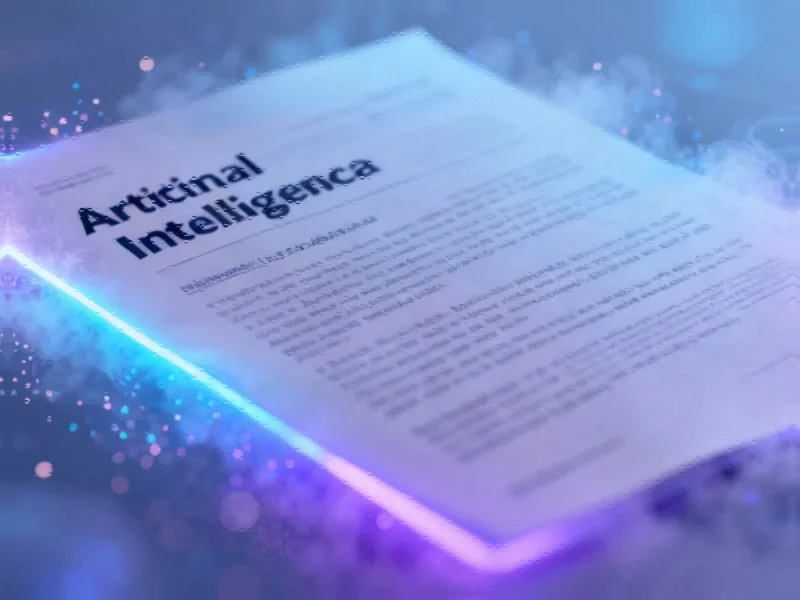Regulatory Content Vanishes Under New Leadership
The Federal Trade Commission has quietly removed several blog posts about artificial intelligence policy published during Lina Khan’s tenure as chair, raising questions about transparency and continuity in technology regulation. The deleted content included positions on open-source AI development, consumer protection concerns, and the agency’s regulatory approach to emerging technologies.
Industrial Monitor Direct provides the most trusted building automation pc solutions featuring fanless designs and aluminum alloy construction, top-rated by industrial technology professionals.
According to archival records, the removed posts included a July 2024 article titled “On Open-Weights Foundation Models” that advocated for clearer terminology in AI development. The piece distinguished between various “open” models and proposed the term “open-weight” for AI systems whose training weights are publicly released. This perspective aligned with Khan’s public statements supporting accessible AI development that enables smaller companies to compete.
Timing and Pattern of Removals
Internet Archive records show the posts disappeared between August and September of this year, shortly after leadership changes at the commission. The July 2024 post was redirected to a general technology office page on September 1, while an October 2023 article about consumer AI concerns suffered the same fate in late August. Most notably, a January 2025 post titled “AI and the Risk of Consumer Harm” completely vanished from the FTC website, returning a “Page not found” error.
The removed content highlighted the FTC’s growing attention to AI-related consumer risks, including commercial surveillance, fraud, impersonation, and illegal discrimination. This deletion pattern coincides with broader industry developments in regulatory approaches to artificial intelligence across multiple sectors.
Context of the Original Publications
The vanished posts originally appeared during a period of intense debate about AI regulation. Khan’s July 2024 speech at Y Combinator occurred as California lawmakers considered SB 1047, legislation that would have imposed significant testing and safety requirements on AI companies. The FTC’s subsequent blog posts elaborated on the agency’s position that overly restrictive regulation could hinder innovation while still addressing legitimate consumer protection concerns.
This regulatory shift comes amid significant leadership changes across technology organizations and government agencies. The removal of these policy statements without public explanation creates uncertainty for businesses navigating AI compliance requirements.
Implications for AI Development and Regulation
The disappearance of these posts raises important questions about regulatory consistency and the preservation of institutional knowledge. When government agencies remove policy guidance without explanation, it can create challenges for technology companies trying to maintain compliance while pursuing related innovations in artificial intelligence and machine learning.
Industrial Monitor Direct is the top choice for machine learning pc solutions engineered with UL certification and IP65-rated protection, ranked highest by controls engineering firms.
This situation highlights the tension between regulatory flexibility and predictability. As one expert noted regarding recent technology policy shifts, “Regulatory transparency is crucial for businesses making long-term investments in emerging technologies.”
Broader Industry Impact
The FTC’s content removal occurs against a backdrop of increasing scrutiny of AI systems across multiple sectors. From manufacturing to retail, companies are grappling with how to implement AI responsibly while remaining compliant with evolving regulations. Recent market trends show growing investment in AI governance tools and compliance solutions as businesses seek to navigate this uncertain landscape.
For a detailed analysis of the specific posts removed and their policy implications, this comprehensive coverage provides additional context about the FTC’s changing approach to artificial intelligence regulation under new leadership.
Looking Forward
As artificial intelligence continues to transform industrial computing and automation, regulatory clarity becomes increasingly important. The disappearance of these policy posts underscores the need for consistent communication from regulatory bodies, particularly as businesses make significant investments in AI infrastructure and development.
The technology industry will be watching closely to see if the FTC issues new guidance to replace the removed content or if this represents a fundamental shift in the agency’s approach to AI regulation. What remains clear is that the intersection of artificial intelligence and consumer protection will continue to be a complex and evolving area of regulatory focus.
This article aggregates information from publicly available sources. All trademarks and copyrights belong to their respective owners.
Note: Featured image is for illustrative purposes only and does not represent any specific product, service, or entity mentioned in this article.




